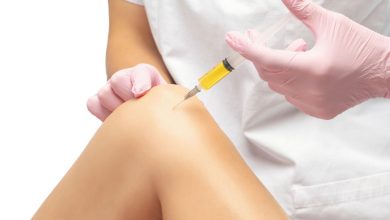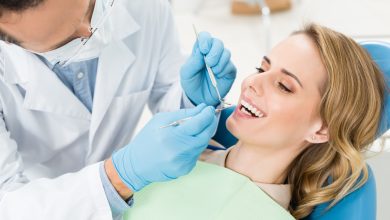
Introduction of Immunoassay Market
Immunoassay is a biological test that uses an antigen or antibody to detect the presence of macromolecule or small molecule. Infectious diseases are carry on by pathogens, which include bacteria, fungi, protozoa, worms, viruses, and prions. Immunoassays’ main purpose is to help the body fight off infections. For the effective diagnosis and treatment of infectious illnesses, quick pathogen detection from patient samples is necessary. Immunoassays can offer a quicker, easier, and more affordable detection than traditional techniques. The size of the global immunoassay market was $24.30 billion in 2021 and is estimated to grow by a CAGR of 7.3% from 2021 to 2030 to reach $45.82 billion.
Immunoassays have different applications such as:
- Diagnosis of diseases
- Therapeutic drugs monitoring
- Clinical pharmacokinetics
- Bioequivalence studies in drug discovery
- Sports anti-doping analysis
- Pregnancy tests to detect the pregnancy maker
- Environmental monitoring, and food testing.
Types of Immunoassays
- Radioimmunoassay: Radioimmunoassay is among the oldest types of immunoassays. RIA is an immunoassay that labels the antibody/antigen with radioactive isotopes (I-235). It measures the antibody-antigen compound with high sensitivity by detecting radioactivity.
- Enzyme immunoassays: It is one of the most widely use immunoassays. Enzymes are use as probes in EIA instead of radioactive isotopes. These enzymes are widely distribute because the enzymatic processes they undergo result in an obvious colour change.
- Fluor immunoassay: It is similar to RIA, except that the label is a fluorophore (e.g., FITC, phycoerythrin) rather than a radioisotope. It is a device that can directly measure the fluorescence signal.
- Chemiluminescence immunoassay (CLIA)- A CLIA is a method for calculating sample concentrations on the basis of the amount of luminescence developed by a chemical reaction.
Market Drivers
- Cancer, especially in those receiving chemotherapy or radiation therapy, leukemia, lymphoma, long-term steroid use, liver disease, diabetes, chronic kidney disease, and dialysis patients with immunoassay-confirmed diagnoses, is among the conditions that may increase vulnerability to infectious diseases. 20% of deaths worldwide over the past ten years, according to the WHO, were cause by infections.
- Cancer incidence is constantly growing, which is expect to boost the demand for cost-effective diagnostic tools like immunoassay. Chronic and infectious diseases like the COVID-19 outbreak are responsible for this growth. SARS-CoV2 (COVID-19), Hepatitis B and C, HIV, dengue, malaria, tuberculosis, and other infectious diseases are rising.
- The marketplace is growing because chronic infectious and immunodeficiency diseases are more common in older people. The number of people aged 65 and older will double in population in 30 years, according to World Population Ageing 2019.
Market Restraints
The use of immunoassays has several disadvantages. Cross-reactivity has continuously caused issues for the immunoassays’ reliability and specificity. In immunoassays, antibodies bind to structural analogues of the target antibody. High sample volume requirements for detection, complicated workflows, unsuitability for high-throughput screening analysis (ELISA), and reagent instability are additional problems.
Segmentation Analysis
- By type, Enzyme Immunoassays (EIA) is the most cost-effective platform because they are fast, convenient to use, and do not require extra processing or disposal procedures. As a result, they dominate the immunoassay market.
- In terms of technique, ELISA, or enzyme-linked immunosorbent assay, dominates the immunoscreening market. Some diseases are difficult to diagnose with other methods, such as swab tests. An ELISA blood test can help identify early indicators of disease or infection in your body.
- Based on application, the infectious disease segment leads the global Immunoassay market share Because of the increased number of infectious diseases, rising number of regulatory approvals and product launches, increased kit adoption, and rising demand for COVID-19 test kits.
- By End User, the Hospital sector dominates the market by encouraging in-house diagnostic laboratories. The rise in infectious diseases, the majority of which are Hospital Acquired Infections, is treatable in hospitals. Its growth is driven by the rising number of tests performed in diagnostic labs, rising laboratory automation, the availability of well-equipped immunoassay systems, the rising prevalence of infectious diseases, and rising government initiatives. As reported by the Centers for Disease Control and Prevention (CDC), 32% of all 1.7 million hospital-acquired infections in the United States are urinary tract infections, 22% are surgical site infections, 15% are lung infections, and 14% are bloodstream infections.
Regional Analysis
In 2021, North America had the biggest revenue share, more than 35.0%, and is expected to continue to rule the market for the study. This can be attributed to two factors: the accessibility of advanced technological diagnostic techniques and the rising demand for diagnostics brought on by the rise in cancer incidence. The high prevalence of infectious diseases like HIV, tuberculosis, and influenza also drives up the demand for detection and treatment.
According to a study from the Global Burden of Disease, infectious diseases account for 4.2% of all disability-adjusted life years lost (DALYs) in countries like the United States with well-established market economies, whereas chronic and neoplastic diseases account for 81%.
The Asia Pacific will be the fastest-growing industry during the forecast period Because of the large geriatric population and high incidence of infectious diseases. Furthermore, one factor driving the region’s market is the increasing adoption of innovative laboratory methods and techniques for faster investigation and diagnosis of infectious and chronic disorders. Furthermore, the introduction of molecular kits and increased demand for diagnostic reagents are key factors driving the market.



